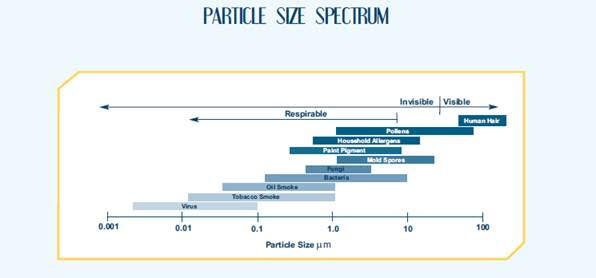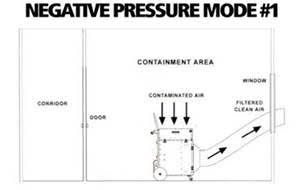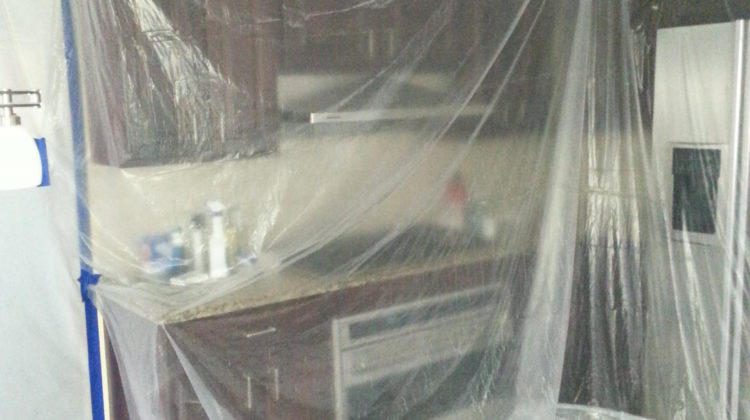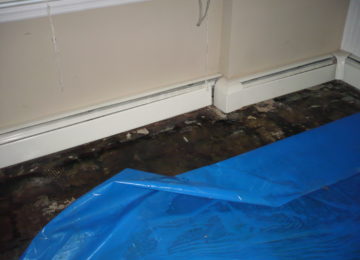Let’s first address why adjoining or residences above construction projects become contaminated.
The proven theory of the “stack effect” or, more generally, “air rises” allows cross contamination or air infiltration to travel between connected residences. All multiple floor apartment buildings have steps and/or elevator shafts, pipe and electrical chases and air infiltration voids that allow air to cross contaminate adjoining residences. For this reason, to avoid inconveniencing building occupants with chemical sensitivities, suppression, disbursement and containment during construction are vital to protect the health of the occupants of the building.
Suggestions to Incorporate for Building Managers & Contractor Requirements
Below are a few suggestions for building managers and contractors on how to lower the impact of contamination during construction projects.
- Use containment plastic and seal any obvious openings which lead to adjacent apartments.
- The preferred method to avoid chemical odors is to use low or zero volatile organic compound (VOC) products when possible. Examples of quality products offered as low or zero VOC’s emitting products are paints, glues and sealants.
- If you must use odor emitting compounds, install a negative air machine(s) during the off-gassing of applied building materials and particulate disbursement during any abrasive activities.
- Allow all volatile organic compounds (VOC’s) to off-gas under slight negative air or adequate cross ventilation. Temporarily shut down the negative air and close windows to monitor odors to determine when off gassing has been completed.
- Use dust suppression/collection systems during all abrasive activities.
- Maintain sharp power cutting instruments to avoid the smell of burnt wood.
- Vacuum work site at the end of each day.
Helpful Steps to Limit Air Contamination
During any remodeling project or the construction of an addition, particularly when the house or adjoining apartment(s) are occupied, it is very important to keep contaminants from the construction site out of the house or migrating to adjacent occupied living spaces. Many construction activities, such as concrete grinding, tile and backer-board cutting, pipefitting, drywall finishing, caulking and foam sealing, gluing, and painting can introduce significant quantities of indoor air contaminants. There are four steps to help limit contamination during a construction process.
To control such contaminants, first avoid creating them by using zero-VOC paints and finishes. Conduct dust-producing activities outside if possible. And capture pollutants as they are produced (with sanding and drywall finishing, for example).
Second, seal off the construction area from the rest of the living space with tightly sealing temporary partitions.
Third, operate temporary exhaust fans/negative air machines in the area under construction. This act maintains negative pressure and keeps airborne contaminants from flowing into adjacent interior spaces. Alternatively, pressurize the adjacent living space (see guidelines below).
And fourth, seal off ducts, air distribution registers, and air inlets for ventilation systems to avoid contaminating ducts and HVAC equipment.
Guidelines For Remodeling Projects
- All contractors working in pre-1978 buildings must be testing the areas they will be demolishing, scraping or altering for lead based paint.
- Whenever any renovation, repair, modification, or demolition is to occur, the building owner must have a licensed asbestos inspector conduct a survey to determine if asbestos is present. Local Law 76/85 mandates a survey to verify that no asbestos is present in the materials that will be demolished.
- Contractors utilizing machinery that cuts or grinds any materials should use dust suppression systems. An example: Dust suppression for portable tools.
- Contractors that cut, grind or scrape any pre-1978 building materials should be using a hepa filter vacuum suppression system as a precaution. Even if the asbestos and lead survey suggested no evidence of lead or asbestos. Hepa filter vacuums filter particulates as small as 0.3 microns (um) (see diagram below). While standard shop vacuums generally redistribute the smaller particulates through their exhaust.

- Contractors should use a negative air system during all active construction and during the periods that materials (ie. glues, paints, cleaners and sealants) will be off-gassing. An example of a filtered negative air system:

- If no asbestos or lead is in the construction materials, then a hepa filter is not required.
- Industry standards recommend an air turnover of the room or apartment to be calculated at 6 times/hour. Example: 1,000 square foot apartment with 8 foot ceilings = 8,000 cubic feet. The negative air machine has an output of 1,000 cubic feet/minute (cfm). This area will have a complete air exchange every 8 minutes. 60 minutes/hour ÷ 8 minutes = 7.5 times / hour. This 1,000 (cfm) negative air machine would be adequate.
Caution: When you use negative air to depressurize a space, make sure that this negative pressure does not affect the function of fuel burning appliances which may be in the space or adjacent to it.
- Where feasible, the HVAC system should be shut down for the duration of the demolition project. All openings, including but not limited to ducts, grilles, grates, diffusers, pipe chases, or other openings within the designated work area, should be sealed with 6-mil polyethylene sheeting and secured with duct tape.
Contact NYIAQ Today
For more information about our mold assessing and testing services, please reach out to us today. We have years of experience handling mold contamination and removal. Our services are available for home owners and contractors acorss Long Island. If you are set to do a remodeling project, get in touch with our office to make sure you are breathing in clean air. Check out all of our services and do not hesiate to reach out if you believe you have air contamination or mold growth. We have years of experience working with people and helping them with their issues.




